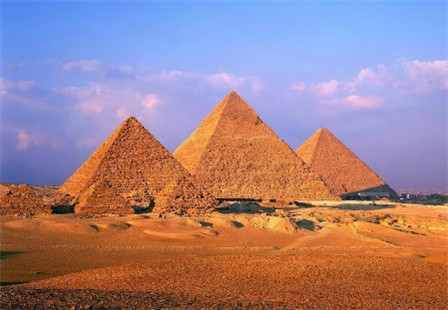
Was there engineering genius involved? Yes, there was. For example, when you're putting the block right at the top, how are you going to lug5 a block of stone that weighs several tons 480 feet up a structure? How are you going to do it, and how are you going to do it without leaving scratches6 on all the rest of the structure? And how many people does it take to drag a block weighing several tons 480 feet up into the sky? Approximately, 2.3 million blocks of stone were cut, transported and assembled to create the Great Pyramid.
有工程天才的參與嗎?是的,有。比如,當(dāng)你要把一個石塊放在頂端時,你該如何把一個幾噸重的石塊提升到480英尺的高度呢?應(yīng)該怎樣做?怎么做才不至于在塔身留下刮痕?把幾噸重的石塊提舉到480英尺的高處又需要多少人力呢?為了建造大金字塔,人們切割、運輸、壘砌了大約230萬塊石頭。
The Pharaohs may have set out to build magnificent tombs for themselves, but in the end they created monuments to human potential. There's a universal message in the pyramids. The pyramids belong to Egypt, but the pyramids also belong to the world. That's why we can all identify the pyramids as an early monument of human greatness.
法老們的初衷是為自己建造豪華的陵墓,而最終他們創(chuàng)建的卻是昭示人類潛能的紀(jì)念碑。金字塔蘊含著一種共同的信息,金字塔屬于埃及,但它也屬于世界。因此我們完全可以把金字塔作為展示人類偉大文明的早期紀(jì)念物。
For being a man?made wonder that has survived the sands of time1, the pyramids rise to the number two spot.
由于歷經(jīng)歲月的滄桑,金字塔位列十大人工奇觀排行榜第2名。


















